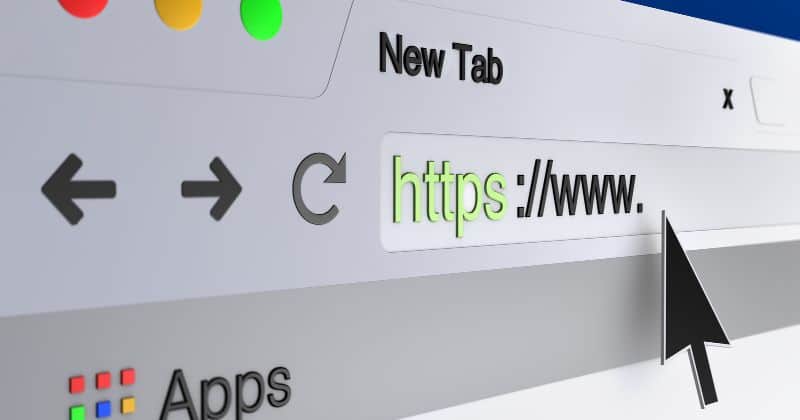Are you thinking about making some extra cash and love to write? How to start blogging side hustle could be your golden ticket. It’s simply about using your writing skills to create blog content and monetizing it for some cool profits.
I get it; starting a blog as a side hustle is easier said than done. There’s choosing the right niche, generating traffic, and, let’s not forget the technical hurdles. Trust me, I’ve faced and conquered these challenges as a seasoned digital marketer and blogger. Stick around because I’ve got some concrete tips to make a successful side hustle.
Knowing the ropes of a blogging side hustle is a game-changer. It opens doors to extra income, creative fulfillment, and even networking opportunities in your industry. So, are you ready to turn your writing passion into profit? Let’s get into the nitty-gritty details.
What You Will Learn
- How to make extra money by blogging about your interests.
- How to work from any location and manage your own schedule.
- How to choose a profitable topic and plan your content.
- How to budget for initial costs like web hosting and domain registration.
Guide to Starting a Blog
This easy-to-follow guide will teach you the basics of starting a blog. The steps are straightforward, especially for beginners, covering everything from picking a topic, setting up your site, and writing awesome posts.
You’ll also find helpful tips for spreading the word about your blog and even making some money from it. And if you need more help, video tutorials are available along the way.
Why Blogging Is a Lucrative Side Hustle
Did you know that blogging can bring in a nice income? You don’t need to do it as a full-time job to see the dollars roll in. In fact, some bloggers earn thousands every month by promoting their own branded products.
However, it’s worth mentioning that getting started takes some time and effort. You’ll need to learn a few new skills before you start seeing any financial gains. One of the best things about blogging? You can do it from wherever you like, whenever you like. That means you get to enjoy the freedom to work on your own schedule.
Reasons to Start a Blogging Side Hustle

Starting a blogging side hustle can be an incredibly rewarding endeavor. With the potential to earn income, have flexibility and freedom, and personal and professional growth, it is definitely worth considering.
Read on to discover why starting a blogging side hustle is an opportunity you don’t want to miss out on.
1. Income Potential
Blogging can bring in good money. The income you make depends on how much work you put into it. You can earn over $50,000 per year if you do it right. There are many ways to make money from a blog.
Some bloggers sell products or services. Others use ads to earn cash. Affiliate marketing is also a popular way to make money blogging. It works by promoting other company’s products and getting paid for every sale that comes from your blog post link.
Putting time and energy into your blog hustle can lead you to new levels of financial success!
2. Flexibility and Freedom
Blogging gives you freedom. You can work from your own home or anywhere else in the world. There’s no boss to report to and no long trips to work. This is perfect for people who like being their own bosses.
It opens up a lot of chances for new paths, too. Blogging lets you build your business in the way that suits you best.
3. Personal and Professional Growth
Starting a blogging side hustle can lead to personal and professional growth. As you create and develop your blog, you’ll have the opportunity to learn new skills, such as writing, marketing, and website management.
You can also explore different interesting topics and industries, expanding your knowledge and expertise. Through blogging, you can network with other bloggers in your niche and build relationships within the industry.
Additionally, your blog’s popularity and influence can open doors to new opportunities like speaking engagements or collaborations with brands. Blogging is not just about making money; it’s about nurturing personal growth and gaining valuable experience along the way.
Preliminary Steps to Start a Blogging Side Hustle

To start a blogging side hustle, you need to take a few preliminary steps. First, choose a niche or topic that you are passionate about and has potential for monetization.
Then, conduct thorough research and planning to understand your target audience and competition. Next, assess your technical skills and identify areas where you may need to improve or learn new skills.
Additionally, create a budget for the initial investment in web hosting and other expenses for starting your blog. By following these preliminary steps, you’ll be well-prepared to start your blogging side hustle successfully.
Choosing a Niche or Topic

Choosing a niche or topic is the first step in starting a successful blog side hustle. It’s important to choose a niche that has the potential for profitability and has a target audience.
This will help you attract readers who are interested in your content. Some people choose to blog about their personal lives, and even though it’s not always focused on making money, they can still earn from it.
If you’re unsure about what niche to choose, there are plenty of blogging niche ideas available for 2023 that aspiring bloggers are searching for. So, take some time to research and find the right niche that aligns with your interests, expertise, and audience demand.
Research and Planning
Researching and planning are crucial steps before starting a blog as a side hustle. Choosing a topic that interests your target audience and fits your niche is important. By understanding the needs and preferences of your audience, you can create valuable content that resonates with them.
Setting goals and creating a content strategy will help guide your blogging journey and increase your chances of success. Additionally, organizing the layout and design of your blog will enhance the user experience, making it easier for readers to navigate and engage with your content.
Technical Skills Needed
To start a blogging side hustle, you don’t need to be an expert in coding or web development. However, some basic technical skills can help you set up and manage your blog effectively.
You should understand navigating and using a content management system (CMS) like WordPress. This will allow you to create and publish blog posts, add images, and easily change your site.
Basic knowledge of HTML and CSS can come in handy for customizing the design of your blog or making small tweaks to its appearance. Familiarity with SEO (search engine optimization) concepts is important, too, so that you can optimize your content for better search engine rankings.
Costs and Budgeting: Initial Investment, Cost of Web Hosting, Budget Planning
Planning out your expenses and budgeting in the early stages of starting a blogging side hustle is crucial. It’s important to be aware of all the potential costs and to set aside an appropriate budget to cover these. Let’s get into the details:
| Blogging Item | Details | Estimated Costs* |
|---|---|---|
| Domain Name & Renewal | Initial cost and yearly renewal fee for your blog’s web address | $10 – $20 initial, $10 – $20 per year |
| Web Hosting | Fees for storing your blog’s data on a web server | $3 – $25 per month |
| WordPress | CMS platform, usually free with most hosting providers | Free |
| WordPress Theme | Free or premium themes for your WordPress blog | Free – $200 |
| Plugins/Add-ons | Features or tools like SEO functionalities | Free – $100 each |
| Content Creation | Costs for articles, images, videos, and design if you hire professionals | $5 – $400 per piece |
| Email Hosting | Costs for a professional email address, e.g., Gmail | $6 per month |
| Website Backup | Optional service for data backup | Free – $50 per month |
| SSL Certificate | Security certificate, usually free with hosting | Free |
| Marketing Expenses | Costs for ads, promotions, and email marketing | Varies |
| Analytics Tools | Optional costs for tools to track blog performance | Free – $100 per month |
| Hardware Costs | Laptop, camera, etc. (if you don’t already own one) | Free – $3,000 one-time |
| Stock Photography | For blog images | Free – $100 per month |
| Blogging Course | Optional educational courses to improve blogging skills | Free – $500 |
| Budget Planning | Set aside this amount for unexpected costs, aim for at least 20% of your initial costs | 20% of initial costs |
As you can see, costs can vary widely based on several factors, including the complexity of your blog and the hosting provider you choose. But with proper budgeting and financial planning, you can make your blogging side hustle a financially sustainable endeavor.
Technical Setup
In the technical setup phase, you’ll set up web hosting, register a domain name, and install a content management system (CMS) like WordPress. It’s an essential step to get your blog up and running smoothly.
Continue reading this guide to learn more about the technical setup process and ensure your blog’s success!
Web Hosting and Choosing the Right Provider
Getting the right web hosting service is essential to creating a successful blog. You need a provider that delivers in areas like speed, support, security, cost, and scalability. Let’s break down some popular options that can be beneficial for your blogging side hustle:
| Hosting Provider | Speed | Support | Security | Cost | Scalability |
|---|---|---|---|---|---|
| HostGator | Excellent | 24/7 customer service | Good with added security features | Various packages to suit different budgets | Options for WordPress, VPS, dedicated, and cloud servers |
| Hostinger | Fast loading times | 24/7 live chat | SSL certificate included | Affordable pricing | Scalable solutions |
| Bluehost | Fast and reliable | 24/7 customer support via phone and chat | Free SSL certificate included with all plans | Affordable pricing with a 30-day money-back guarantee | Scalable solutions |
| Cloudways | Fast and secure hosting with optimized servers for WordPress, Magento, and other apps | 24/7 live chat and ticket support | Free SSL certificate included with all plans | Pay-as-you-go pricing model with a 3-day free trial. Most Budget friendly | Scalable solutions |
| A2 Hosting | Turbo servers for faster page loading times | 24/7 customer support via phone, email, and live chat | Free HackScan protection against malware attacks | Affordable pricing with a 30-day money-back guarantee | Scalable solutions |
Remember, each hosting service offers a distinct set of features. It’s essential to assess your blogging needs and choose a provider accordingly.
Registering a Domain Name

Registering a domain name is an important step in launching your blog. It gives your website a unique online address that people can type into their browsers to find you. When choosing a domain name, it’s crucial to pick one that aligns with your blog’s niche and brand identity.
You want something memorable and easy to spell. Popular domain registrars like GoDaddy, Bluehost, and Domain are commonly used for this process. They offer user-friendly platforms where you can search for available domain names and purchase the one you like best.
I recommend using a domain name generator tool to help generate ideas and check for availability before making your final decision. Once you’ve registered your domain name, there are further steps to take, such as getting web hosting and building a successful website.
Content Management System (CMS) and WordPress
WordPress is a popular Content Management System (CMS) many bloggers and entrepreneurs use. It’s free and easy to use, making it a great choice for those starting their blogging side hustle.
With WordPress, you can create, manage, and modify website content without technical skills. It’s an open-source CMS, meaning the software is constantly being improved and updated by a community of developers.
WordPress makes publishing your content online simple, whether you’re writing blog posts or creating site pages.
Blog Design and Customization
Regarding blog design and customization, there are a few key factors to consider to create a visually appealing and user-friendly website. One of the first steps is selecting a WordPress theme that aligns with your brand and desired aesthetic.
You can install essential WordPress plugins from there to enhance functionality and improve the overall user experience. Additionally, don’t forget to create important pages such as About, Contact, Privacy, and Terms of Service.
By paying attention to these details, you can ensure that your blog stands out from the crowd and leaves visitors impressed with its professional appearance.
WordPress Themes
WordPress themes play a crucial role in customizing the look and feel of your blog. They allow you to easily change the appearance of your site with just a few clicks, without any technical skills required.
Whether you’re looking for a minimalist design or a bold and vibrant layout, countless themes are available to suit all kinds of blogs. With drag-and-drop layouts, you can make your blog visually appealing and engagingly showcase your writing.
When choosing a WordPress theme for your online business, consider factors such as responsiveness on different devices, speed optimization, SEO-friendliness, customization options, customer reviews, updates, and support from developers.
Install Essential WordPress Plugins
Installing essential WordPress plugins is crucial when starting a blogging side hustle. These plugins can enhance your blog’s functionality and design, making it more user-friendly and attractive. Here are some must-have WordPress plugins to consider:
- Yoast SEO: Helps optimize your blog for search engines and improves your site’s visibility.
- Akismet Anti-Spam: Protects your blog from spam comments and filters out unwanted content.
- Jetpack: Offers a range of features, including security, performance optimization, and site analytics.
- UpdraftPlus: Allows you to regularly back up your blog’s data, ensuring you don’t lose any important information.
- WPForms: This enables you to create contact forms for your readers to contact easily.
- MonsterInsights: Integrates Google Analytics with your blog, providing valuable insights into your audience and their behavior.
- Social Warfare: Adds social media sharing buttons to encourage readers to share your content on their own networks.
- W3 Total Cache: Speeds up your blog’s loading time by caching content and optimizing server performance.
- Pretty Links: Shortens and tracks affiliate links, making managing and monitoring their impact on revenue easier.
- Smush: Optimizes images on your blog, reducing file size without compromising quality for faster loading times.
Creating Main Pages: About, Contact, Privacy, Terms of Service
When starting a blogging side hustle, it’s important to create main pages for your blog, such as the About, Contact, Privacy, and Terms of Service pages. The About page lets you share information about yourself and why people should follow your blog.
It’s a chance to showcase who you are and what you do. The Contact page allows readers to easily reach out to you for inquiries or collaborations. It’s important to have a way for your audience to connect with you.
The Privacy page outlines how your blog collects, uses, stores, and protects user data. This ensures transparency and compliance with privacy regulations. Lastly, the Terms of Service page sets out the rules and guidelines for using your blog, including copyright information and limitations of liability.
Creating these main pages is crucial for establishing credibility and trust with your readers. They provide essential information about yourself and how users’ data will be handled on your blog.
Content Planning and Creation
Developing a solid strategy for content planning and creation for your blog is important. Start by identifying your target audience and understanding what type of content they’re interested in.
This will help you create relevant and valuable blog posts that resonate with readers. Additionally, plan out your content in advance to have a clear roadmap for what topics you’ll cover each week or month.
Finally, don’t forget the importance of writing high-quality, well-researched content that provides value to your readers. With these strategies in place, you’ll be on your way to creating engaging blog posts that attract a loyal following.
Developing a Content Strategy
Developing a content strategy is crucial for success as a blogger. Here are the steps you need to take:
- Define your goals: Determine what you want to achieve with your blog, such as increasing traffic, growing your email list, or generating sales.
- Perform target market research: Understand your audience’s needs, interests, and pain points. This will help you create content that resonates with them.
- Conduct keyword research: Identify the keywords and phrases your target audience uses when searching for information related to your niche. Use tools like Google Keyword Planner or SEMrush for this.
- Plan your content calendar: Create a schedule for publishing regular blog posts. Decide on the frequency of posting and stick to it consistently.
- Create high-quality content: Focus on producing valuable, informative, well-written articles addressing your audience’s needs and providing solutions.
- Optimize for search engines: Incorporate relevant keywords naturally into your blog posts to improve their visibility in search engine results pages.
- Promote your content: Share your blog posts on social media platforms and engage with your audience. Use email newsletters to notify subscribers about new content.
- Monitor and analyze performance: Track metrics like website traffic, engagement, and conversions to assess the effectiveness of your content strategy. Adjust it accordingly based on the data gathered.
Writing Your First Blog Post
When writing your first blog post, choosing a topic that interests your target audience and aligns with their interests is important. Conducting keyword research can help you identify topics that people want to read about.
Once you have a topic in mind, start by outlining the main points or ideas you want to cover in your post. This will help you get organized and keep your content clear and focused.
When actually writing the post, be sure to use simple language and short sentences to make it easy for readers to understand. Also, consider including relevant facts or statistics from reliable sources to support your points.
Free Blog Photo Resources
Finding visually appealing photos for your blog doesn’t have to be time-consuming or expensive. Here is a list of free blog photo resources that can help you enhance your content without breaking the bank:
- Unsplash – A popular platform with a wide variety of high-quality, royalty-free images.
- Pixabay – Offers over 1.7 million free photos, vectors, and illustrations that you can use for personal and commercial purposes.
- Pexels – Provides a vast collection of free stock photos licensed under the Creative Commons Zero (CC0) license.
- Burst by Shopify – Offers thousands of free stock images that are ideal for e-commerce and product-related blogs.
- Freepik – A comprehensive resource offering photos, vectors, PSD files, and icons.
- Reshot – Features handpicked and curated photos from photographers who can use their work freely.
- SplitShire – Provides stunning images across various categories, all available for free download.
- Life of Pix – Curated by the Leeroy Advertising Agency in Montreal, this site offers high-resolution images captured by professional photographers.
Promotion and Outreach
Promotion and outreach are crucial for getting your blog noticed. Use social media platforms to share your blog posts, engage with your audience, and build a following. Consider guest blogging on relevant platforms to reach new readers.
And don’t forget the power of an email newsletter – it’s a direct way to stay connected with your audience. Ready to learn more about these strategies? Keep reading for pro tips on promoting and growing your blog successfully!
Social Media Promotion
Promoting your blog on social media is crucial to attracting more readers and building an audience. With billions of people using platforms like Facebook, Instagram, and Twitter, social media provides a great opportunity to reach a wide audience.
Sharing your blog posts on these platforms increases visibility and drives traffic to your website. Social media allows you to engage with your followers, respond to comments or questions, and create a community around your blog.
Creating compelling content that resonates with your target audience and using relevant hashtags and keywords to improve discoverability is important. Regularly posting updates about new blog posts or offering sneak peeks can help generate interest and keep followers engaged.
Guest Blogging on Relevant Platforms
Guest blogging is a great way to boost your blog’s visibility and reach. Writing guest posts on relevant platforms can increase your SEO performance and build brand awareness among your target audience.
It’s important to find platforms that are related to your niche or topic so that you can reach the right people. Building relationships within your niche through guest blogging also opens networking and collaboration opportunities.
To get started, try reaching out to potential platforms with a well-crafted pitch before submitting your guest post. Remember, writing quality content is key to publishing on these relevant platforms.
Email Newsletter Strategy
Building an effective email newsletter strategy is essential for bloggers and entrepreneurs looking to grow their audience and generate more sales. By sending regular newsletters, you can inform your subscribers about the latest updates, news, and tips related to your products or services.
It’s a powerful tool for building customer relationships and increasing brand awareness. In fact, statistics show that email marketing is highly effective in driving engagement and conversions.
When crafting outreach emails as part of your content marketing strategy, it’s important to promote valuable content that will resonate with your audience and encourage them to take action.
Monetization Strategies
To monetize your blog, there are several strategies you can consider. One popular option is affiliate marketing, where you earn a commission by promoting products or services through affiliate links on your blog.
Another way to generate income is through sponsored posts, where brands pay you to write about their products or services. You can also sell digital products like e-books, online courses, or even coaching or consulting services related to your blog’s niche.
Don’t forget to explore different advertising options like display ads and sponsored content as well. Ultimately, the key is finding the right combination of monetization strategies that align with your audience and goals for your blog.
Monetizing Your Blog
Monetizing your blog is a great way to earn income and make money from your passion. You can use several strategies to monetize your blog, such as advertising, sponsored content, affiliate sales, and selling digital products.
By building trust with your audience and providing valuable content, you can create opportunities for coaching or consulting services. In fact, successful bloggers have been able to earn their first $10,000 in just six months.
Ebooks and affiliate sales are also effective ways to generate income from your blog. Remember to focus on providing value and meeting the needs of your target audience to monetize your blog successfully.
Affiliate Programs
Affiliate marketing is great for bloggers and entrepreneurs to earn money through their websites. Here are some popular affiliate programs that you can join:
- Amazon Associates: Earn commissions by promoting products from the world’s largest online marketplace.
- Commission Junction: Connect with top brands and earn commissions for driving sales and leads.
- ShareASale: Choose from thousands of merchants and promote their products on your blog.
- ClickBank: Find digital products to promote in various niches, such as health, fitness, and personal development.
- Rakuten Marketing: Partner with well-known brands like Macy’s, Walmart, and Sephora to earn commissions on sales.
- eBay Partner Network: Promote eBay listings and earn commissions when people purchase.
- CJ Affiliate: Access various advertisers across different industries and earn commissions for each referral.
- Shopify Affiliate Program: Earn recurring commissions by referring customers to sign up for Shopify’s e-commerce platform.
- Awin: Work with leading global brands and get access to exclusive deals and promotions.
- Target Affiliates: Earn up to 8% in commission by promoting Target’s extensive range of products.
How Bloggers Get Paid
Bloggers can be compensated in various ways for their efforts, depending on their blog’s focus, audience size, and the tactics they deploy. Let’s summarize some common ways bloggers generate income in the table below.
| Income Stream | Description |
|---|---|
| Advertising | Many bloggers create and sell digital products like ebooks, online courses, or digital downloads. These products provide a source of income that has the potential to scale. |
| Affiliate Marketing | Bloggers promote products or services and earn a commission for any sales made using their referral link. Affiliate programs provide a potential passive income source. |
| Sponsored Posts | Companies pay bloggers to write and publish blog posts about their products, services, or company. The rates vary depending on the size and engagement level of the blogger’s audience. |
| Digital Products | Bloggers promote products or services and earn a commission for any sales using their referral link. Affiliate programs provide a potential passive income source. |
| Services | Bloggers can offer services related to their niche, such as consulting, coaching, design, or writing services. This method can generate significant income, especially for bloggers with specialized skills or expertise. |
| Membership Programs | Bloggers can create a membership section on their blog where readers pay a recurring fee for access to exclusive content or resources. |
Remember, there’s no one-size-fits-all approach to monetizing a blog. Consider your blog’s audience, your strengths, and the time you have available when deciding which income streams to pursue. Experiment with different strategies and see what works best for you and your blog.
Blogging Pro Tips
Consistency and continuous education are key to success in blogging. It’s important to establish a regular posting schedule and stick to it, as this helps build trust with your audience and keeps them engaged.
Additionally, make sure you stay up-to-date with the latest trends, tools, and strategies in blogging by investing time in your own learning. Networking with other bloggers can also be incredibly beneficial – share ideas, collaborate on projects, and support each other’s growth.
Remember, blogging is a journey of constant improvement, and staying connected within the blogging community will help you stay motivated and inspired along the way.
Consistency and Continuous Education
Consistency and continuous education are key to building a successful blogging side hustle. Consistency means regularly publishing new content and engaging with your audience.
It helps you build trust, attract more readers, and improve your search engine rankings over time. By staying consistent, you can establish yourself as an authority in your niche and keep readers engaged.
Continuous education is equally important because the blogging landscape is constantly evolving. You must stay updated on the latest trends, SEO techniques, social media strategies, and content marketing tactics to stay ahead of the competition.
Whether through online courses, industry blogs, podcasts, or workshops, investing in ongoing learning will help you refine your skills and adapt to changing reader preferences.
Networking with Other Bloggers
Networking with other bloggers is a great way to grow your readership and expand your blogging side hustle. Building meaningful connections with fellow bloggers can lead to collaborations, guest posting opportunities, and increased visibility for your blog.
Don’t be afraid to reach out and make connections – attending events or joining online communities dedicated to blogging can help you connect with like-minded individuals. Remember that networking is a two-way street; offer support and assistance to others in the blogging community, as it fosters strong relationships and opens up new opportunities for both parties involved.
By networking effectively, you can exchange ideas, share experiences, and learn from each other’s successes in the world of blogging.
Conclusion
Starting a blogging side hustle can be a lucrative and fulfilling venture. With the right planning, technical setup, content creation, and promotion strategies, you can create a profitable blog that generates income while providing you with flexibility and freedom.
Remember to choose a niche or topic you are passionate about, continuously learn, network with other bloggers, and stay consistent in your efforts. So why wait? Start your blogging side hustle today and get closer to financial independence and personal growth.
FAQs
How can I pick a name for my blog?
Choosing a blog name involves considering your niche, target audience, and keywords. Opt for a memorable name that is easy to spell and relevant to your content. Utilize keyword research tools to identify terms that can improve search visibility. Register a matching domain for brand consistency.
How do I find ideas for my blog posts?
To generate blog post ideas, analyze your target audience’s pain points and questions. Use tools like Google Trends and AnswerThePublic for topic inspiration. Examine competitors’ blogs to identify gaps in content. Additionally, consider seasonal topics and industry updates for timely posts. Always align ideas with your blog’s overall theme and objectives.
Does blogging help with freelance clients?
Blogging can significantly aid in acquiring freelance clients by showcasing expertise, providing value, and improving SEO rankings. Well-crafted blog posts attract organic traffic and establish authority in your field. This content marketing strategy can convert readers into clients and enhance your professional credibility.
What should be my first step after deciding on the blog topics?
After selecting blog topics, conduct keyword research using tools like Google Keyword Planner or SEMrush. Identify high-volume, low-competition keywords relevant to your topics. This data-driven approach optimizes your content for search engines and targets the specific queries your audience is making.
Can I make money from blogging?
Earning money through blogging is feasible but requires strategic planning and execution. Revenue streams include affiliate marketing, sponsored posts, and selling digital products or services. Consistent, high-quality content and effective SEO practices are essential for attracting a sizable audience and increasing monetization opportunities.
What should be my first step after deciding on the blog topics?
After finalizing blog topics, your first step should be conducting keyword research. Utilize tools like Google Keyword Planner or SEMrush to identify relevant, high-volume, low-competition keywords. This ensures your content is optimized for search engines and aligns with queries your target audience is making.
How do I start a side hustle blog?
Identify a profitable niche and target audience to initiate a side hustle blog. Choose a reliable hosting service and install a content management system like WordPress. Conduct keyword research for SEO optimization. Create a content calendar and consistently publish quality articles. Implement monetization strategies such as affiliate marketing, sponsored posts, or selling digital products.
What are quick tips for starting a blogging side hustle?
For a blogging side hustle, select a niche aligned with your expertise and audience demand. Use a reliable hosting service and a user-friendly CMS like WordPress. Prioritize SEO by conducting keyword research. Develop a content calendar and consistently publish high-quality posts. Monetize through affiliate marketing, sponsored content, or digital products.



